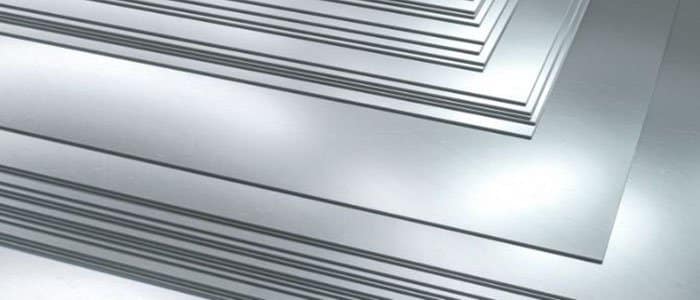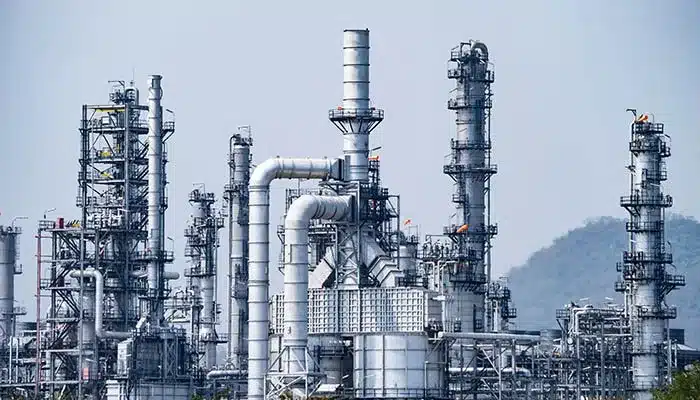In the challenging realm of industrial engineering and production, choosing materials is more than a mere option—it’s a vital decision that determines efficiency, safety, and durability. When the operating environment involves extreme heat, standard materials often fall short, leading to premature failure and costly downtime.
Engineered specifically to excel where others falter, 347 stainless steel offers a unique combination of high-temperature strength, exceptional corrosion resistance, and remarkable stability. This comprehensive guide will delve into what makes 347 stainless steel the definitive choice for high-temperature applications.
What is 347 Stainless Steel? Understanding the Chemistry
At its core, 347 stainless steel is an austenitic chromium-nickel stainless steel. Its closest relative is the widely known 321 grade. The key differentiator, and the source of its superior performance, lies in its stabilization.
- Base Composition:Like other 300-series steels, it contains approximately 18% chromium and 8-11% nickel, providing excellent general corrosion resistance.
- The Stabilizing Element:The secret ingredient is Columbium (Niobium). This element is added in concentrations of about 10 times the carbon content.
Why is this so important? Columbium has a stronger affinity for carbon than chromium does. This prevents the formation of chromium carbides at high temperatures, a phenomenon known as sensitization. By locking up the carbon, columbium ensures that the chromium remains free to form its protective, passive oxide layer, safeguarding the steel against intergranular corrosion.
Key Properties of 347 Stainless Steel for High-Temperature Use
The unique chemical makeup of 347 stainless steel translates directly into a set of powerful properties that are highly sought after in thermal environments.
1. Exceptional Resistance to Sensitization and Intergranular Corrosion
This is the primary advantage of 347. During welding or prolonged exposure to temperatures between 800-1500°F (425-815°C), unstabilized stainless steels (like 304) can form chromium carbides at the grain boundaries. This depletes the chromium in those areas, making the steel vulnerable to corrosion along the grain lines. The columbium in 347 effectively prevents this, making it ideal for welded components that must operate in high-temperature corrosive services.
2. Superior High-Temperature Strength and Creep Resistance
347 stainless steel maintains its mechanical strength exceptionally well at elevated temperatures. It exhibits good creep and stress rupture resistance up to about 1500°F (815°C). “Creep” is the tendency of a solid material to slowly move or deform permanently under the influence of mechanical stresses. For parts like furnace components, exhaust manifolds, and heat exchangers, this resistance is essential for lasting strength.
3. Excellent Oxidation Resistance
The high chromium content allows 347 to form a tightly adherent, self-healing oxide layer on its surface. This layer protects the underlying metal from oxidative damage in continuous service up to 1600°F (870°C) and in intermittent service up to 1700°F (925°C).
4. Good Ductility and Fabricability
Despite its strength, 347 can be readily formed and welded using standard fabrication techniques for austenitic stainless steels. It can be deep-drawn, spun, and formed without excessive spring-back. Its weldability is a major selling point, as it can be welded without the need for post-weld annealing in most applications.
347 vs. 321 Stainless Steel: A Head-to-Head Comparison
The question often arises: should I use 347 or 321? Both are stabilized austenitic grades designed for high-temperature applications. The choice often comes down to specific operational needs.
| Feature | 347 Stainless Steel (Columbium Stabilized) | 321 Stainless Steel (Titanium Stabilized) |
| Stabilizer | Columbium (Niobium) | Titanium |
| High-Temp Stability | Excellent. Columbium is more stable and does not transfer into the weld pool as easily as titanium. | Good, but titanium can be lost during welding, reducing stabilization in the weld zone. |
| Creep Resistance | Generally superior to 321, especially at temperatures above 1100°F (593°C). | Good, but slightly lower than 347 at the highest temperatures. |
| Aqueous Corrosion | Excellent resistance to a wide range of corrosive media. | Also excellent, but 347 is often preferred for the most severe conditions. |
| Cost | Typically slightly more expensive than 321. | Generally the more cost-effective option. |
Bottom Line: For the most demanding high-temperature applications, particularly those involving repeated thermal cycling or the highest possible service temperatures, 347 stainless steel is the premium choice.
Common High-Temperature Applications for 347 Stainless Steel
The unique properties of 347 make it indispensable across several critical industries:
- Aerospace:Jet engine exhaust manifolds, afterburner components, and other high-temperature aircraft parts.
- Chemical Processing:Heat exchangers, process piping, and reactors handling corrosive chemicals at elevated temperatures.
- Power Generation:Boiler and superheater tubes, especially in waste-to-energy and biomass plants where corrosive flue gases are present.
- Petroleum Refining:Furnace components, stacks, and equipment exposed to high-sulfur environments.
- Automotive:High-performance exhaust systems and turbocharger components.
Looking for a suitable stainless steel supplier? Daxun Alloy Co., Ltd. provides high-quality 347 stainless steel, whether it is plates, coils, bars, pipes, etc. We can provide it. Contact us now and let our stainless steel experts serve you.




